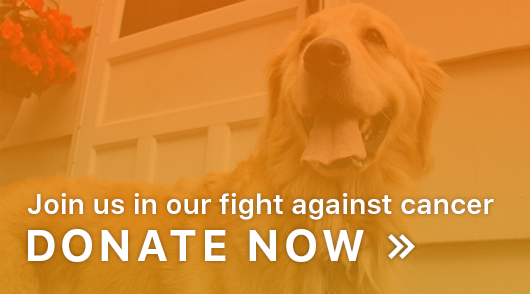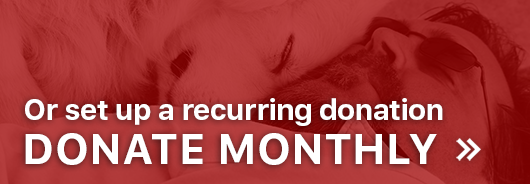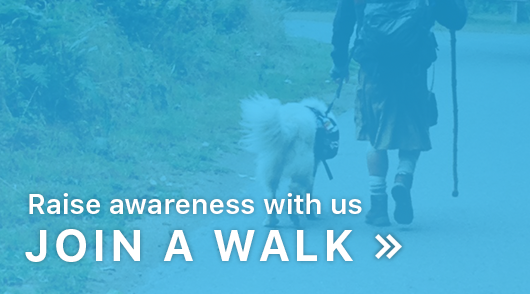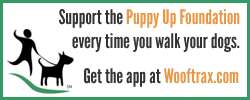
One Health – It’s all connected
From the AVMA
One Health is the integrative effort of multiple disciplines working locally, nationally, and globally to attain optimal health for people, animals, and the environment. Together, the three make up the One Health triad, and the health of each is inextricably connected to the others in the triad. Understanding and addressing the health issues created at this intersection is the foundation for the concept of One Health.
One Health – What is One Health?
One Health is the integrative effort of multiple disciplines working locally, nationally, and globally to attain optimal health for people, animals, and the environment. Because of their expertise, veterinarians play critical roles in the health of animals, humans, and even the environment, but these roles are often overlooked or unrecognized. Nonetheless, veterinary medicine is the only profession that routinely operates at the interface of these three components of One Health.
The concept behind One Health has existed for centuries – from Hippocrates’ “On Airs, Waters, and Places” (estimated 400 BC) to the AVMA’s webpage you’re reading today. Some of the greats who have contributed to One Health include individuals such as Giovanni Lancisi, Louis-Rene Villerme, Rudolf Virchow, William Osler, Louis Pasteur, Robert Koch, Rachel Carson, former Assistant Surgeon General James Steele, and Calvin Schwabe, just to name a few. Dr. Schwabe captured the term “One Medicine” in his book, Veterinary Medicine and Human Health, and it was in honor of him that the AVMA’s One Health Initiative Task Force (OHITF) dedicated its final report.
As the human population continues to increase and expand across our world, the interconnection of people, animals, and our environment becomes more significant and impactful. The importance of One Health is highlighted by many factors in our world today:
- The world’s total population exceeded 7 billion people in 2011, and it continues to climb.
- As our population expands geographically, the contact between human and wild animal habitats increases, introducing the risk of exposure to new viruses, bacteria and other disease-causing pathogens.
- Advancing technologies and science-based evidence is increasing the awareness, knowledge, and understanding of the interdependency of the health of humans, animals, and the environment.
- The human-animal bond continues to grow throughout societies.
- It is estimated that at least 75% of emerging and re-emerging diseases are either zoonotic (spread between humans and animals) or vector-borne (carried from infected animals to others through insects).
- Vigilant protection of our food and feed supplies from food-borne diseases, contamination, and acts of terrorism is critical for human and animal health.
- Contamination by personal care products and pharmaceuticals has been detected in our waters.
One Health – What can you do?
One Health is incredibly vast and progressing on a daily basis. With so many possibilities, it would be difficult to list all of the ways people can get involved in One Health, but we have a list of ten simple ways you can help. But, don’t feel limited to those listed below. Use your knowledge, skills, and interests to make your own positive impacts.
- Check out the final report of the One Health Initiative Task Force, which presents a wealth of information and recommendations, including steps which led to the development of the One Health Commission.
- Explore the One Health Commission website as well as others which address One Health. A brief list of such websites is provided on the Additional Resources page.
- If you’re a veterinary student, get engaged with the SAVMA’s One Health Challenge and perhaps even apply for an AVMA Headquarters or Government Relations Division Externship.
- If there’s not already a pharmaceutical take-back program available in your area, visit Unwantedmeds.org to learn how you can get one started.
- Spread the word about One Health to your family, friends, classmates, veterinarian, physician, and everyone else you can.
- Develop or participate in an activity for World Rabies Day.
- Sign up for ProMED Mail from the International Society for Infectious Diseases and receive e-mail alerts of human, animal, and plant diseases from around the world.
- Become more aware of and proactive with issues which impact the health of animals, humans, and the environment.
- No contribution to One Health is too small – just do what you can when you can.
One Health – What’s the AVMA doing?
For many years now, the AVMA has been engaged in and an advocate for One Health, including the establishment of the One Health Initiative Task Force (OHITF), which launched the AVMA’s One Health initiative (not to be confused with the organization, the One Health Initiative). Provided here is a brief discussion of just a few of things we’re doing that are related to One Health.
- In honor of the inaugural “One Health Day” celebrated on November 3, 2016, the AVMA and American Academy of Pediatrics issued a joint statement, “The Value of Professional Collaboration in Protecting the Health of People and Animals,” outlining opportunities for collaboration that would benefit the health and well-being of all community members – human and animal.
- The AVMA offers online collections of information, resources, and guidance pertaining to One Health issues faced by the veterinary profession.
- AVMA Public Health Information provides a wealth of information on various public health issues relevant to the veterinary profession.
- Veterinary Medicine in Today’s Global Community is a microsite dedicated to international opportunities, from training and educational programs to hands-on service projects in disadvantaged areas across the world.
- Green Veterinary Practices is dedicated to environmentally sustainable tips that veterinarians can use in their existing practices or when building new ones.
- Waste Disposal by Veterinary Practices: What Goes Where? gathers regulations, guidance, resources, and tips on a wide range of disposal issues. Proper disposal, which for some items includes recycling, is key to preventing certain risks to people, animals, and the environment.
- While almost all of the AVMA’s Councils and Committees may address One Health-related issues to some extent, there are seven that are routinely and actively engaged in One Health. Each is comprised of subject matter experts who collectively provide the AVMA with invaluable perspectives, guidance, and leadership on issues under their respective entity’s charge.
- The American Veterinary Medical Foundation, which is also involved with One Health issues, is the charitable arm of the AVMA. From offering financial assistance in times of disaster and emergency, to funding veterinary scholarships and animal-health studies, the AVMF’s efforts span the spectrum of veterinary philanthropy.
- The AVMA continues to be an institutional member of the One Health Commission and has a representative on the Commission’s Board of Directors and Council of Advisors. The formation of the Commission was an outcome from an OHITF recommendation to continue One Health efforts through a multi-organizational One Health Joint Steering Committee.
- The Student AVMA is involved in One Health and has developed the SAVMA One Health Challenge, which encourages veterinary students to organize and participate in events to increase community awareness and collaboration within the health professions.
- The AVMA is a member of the Healthy People Consortium, which is a component of the U.S. Department of Health and Human Services’ Healthy People 2020 program. Healthy People 2020 is a decade-long, science-based program geared at improving the health of all Americans. Participation in the Healthy People program was just one of the recommendations made by the OHITF.
- The AVMA 20/20 Vision Commission Report discusses One Health and the vital roles that the AVMA and the veterinary profession play in it.
- The AVMA has numerous policies relevant to One Health. Some of those most central to the human, animal, and environment interface are:
- AVMA Food Safety Policy
- AVMA Strategy regarding Antimicrobial-Resistant Bacteria
- Aquatic Ecosystems
- Compendium of Measures to Control Chlamydophila psittaci Infections Among Humans (Psittacosis) and Pet Birds (Avian Chlamydiosis)
- Compendium of Measures to Prevent Disease Associated with Animals in Public Settings
- Environmental Responsibility
- Global Climate Change and Animal Health
- One Health
- Raw Milk
- Zoonotic Disease Education








